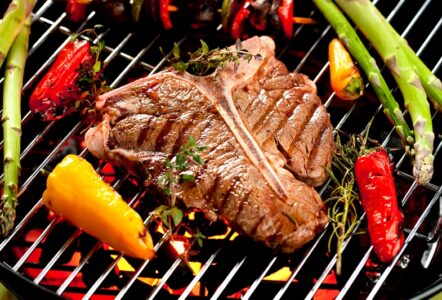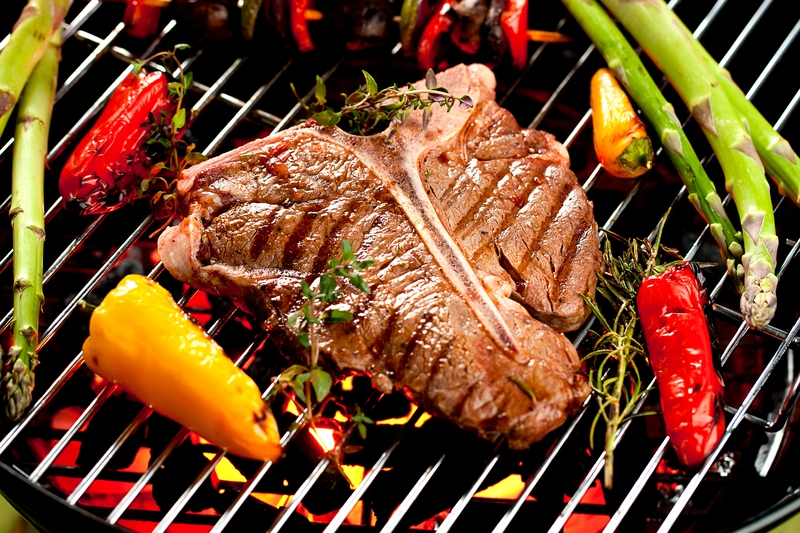 Charcoal grilling is a popular cooking method enjoyed by many for its distinctive flavor and rustic charm.
Charcoal grilling is a popular cooking method enjoyed by many for its distinctive flavor and rustic charm.
When properly managed, charcoal grilling can be a healthy cooking option, offering a unique flavor while allowing for healthier meal preparation.
It is essential to consider factors like food choice, cooking time, and temperature control to maximize health benefits.
Many people are drawn to the smoky taste of grilled foods, but health concerns often arise regarding the potential formation of harmful substances during the cooking process.
Understanding how to minimize these risks can enhance the enjoyment of charcoal grilling while still prioritizing health.
By exploring the nutritional aspects, safety tips, and healthier recipes, this blog post will provide valuable insights that allow enthusiasts to grill confidently.
Grilling can be both a delightful and health-conscious way to prepare meals with the right approach.
Health Implications of Charcoal Grilling

Charcoal grilling can raise specific health concerns while also offering some benefits.
Understanding the implications of carcinogens, smoke inhalation, and the high-temperature cooking process is crucial for making informed choices.
Exposure to Carcinogens
Grilling on charcoal can lead to the formation of harmful chemicals.
During the grilling process, fat drips onto hot coals, producing smoke that contains polycyclic aromatic hydrocarbons (PAHs) and heterocyclic amines (HCAs). Both of these compounds are considered carcinogenic.
Research has shown that cooking meats at high temperatures can significantly increase HCA levels.
To minimize exposure, using lean meats, marinating before grilling, and flipping frequently can help reduce the formation of these harmful substances.
Impact of Smoke Inhalation
Smoke produced from charcoal grilling can affect respiratory health.
It contains particulates and volatile organic compounds that may irritate the lungs and exacerbate conditions like asthma.
Chronic exposure to smoke can lead to long-term health issues.
Proper ventilation during grilling can lower these risks.
Grilling outdoors in an open area reduces the concentration of harmful substances in the air, protecting both the grill operator and nearby individuals.
Avoiding excessive flare-ups also minimizes the production of harmful smoke.
Benefits of High-Temperature Cooking
Despite the risks, high-temperature cooking methods like charcoal grilling offer certain advantages.
Cooking at high temperatures can enhance flavor through the Maillard reaction, which browns the meat and creates a distinctive taste.
Furthermore, grilling can be a healthier cooking option than frying.
It allows excess fat to drip away from the food, reducing overall calorie content.
Choosing fresh vegetables and lean meats can amplify these benefits, making grilled dishes a delicious option when prepared mindfully.
Types of Charcoal for Grilling
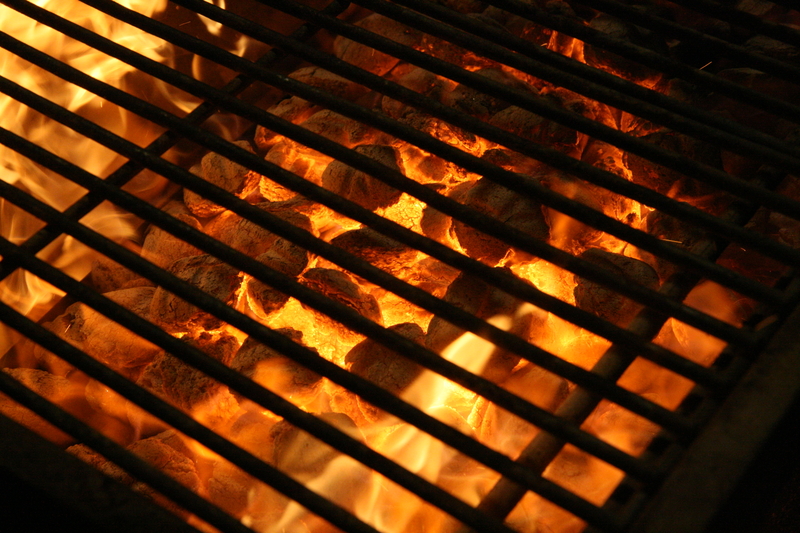
Grilling with charcoal involves various types that can significantly affect flavor, cooking time, and overall experience.
Understanding the differences between lump charcoal and briquettes, as well as the role of natural charcoal and additives, is essential for making informed choices.
Lump Charcoal Versus Briquettes
Lump charcoal is made from pure hardwood that has been burned in the absence of oxygen.
This process, known as pyrolysis, creates large chunks of charcoal.
It lights quickly, burns hotter, and produces less ash compared to briquettes.
The natural wood flavor it imparts to food is often preferred by grilling enthusiasts.
Briquettes, on the other hand, are manufactured from compressed sawdust and charcoal fines, often with the addition of binders and additives.
They burn more evenly and for a longer duration, making them suitable for slow cooking.
However, some of the additives can affect the flavor of the food.
Natural Charcoal and Additives
Natural charcoal is produced without chemical additives, offering a cleaner burn.
This type of charcoal is favored by health-conscious individuals seeking to minimize the ingestion of harmful chemicals.
It primarily comes from sustainably sourced hardwood.
Many briquettes use additives like lighter fluid or coal dust, which can introduce unwanted flavors and increase the production of smoke.
Check labels to identify what is in the briquettes.
Opting for those with fewer or no additives can enhance the grilling experience while maintaining a more authentic taste.
Grilling Techniques for Health
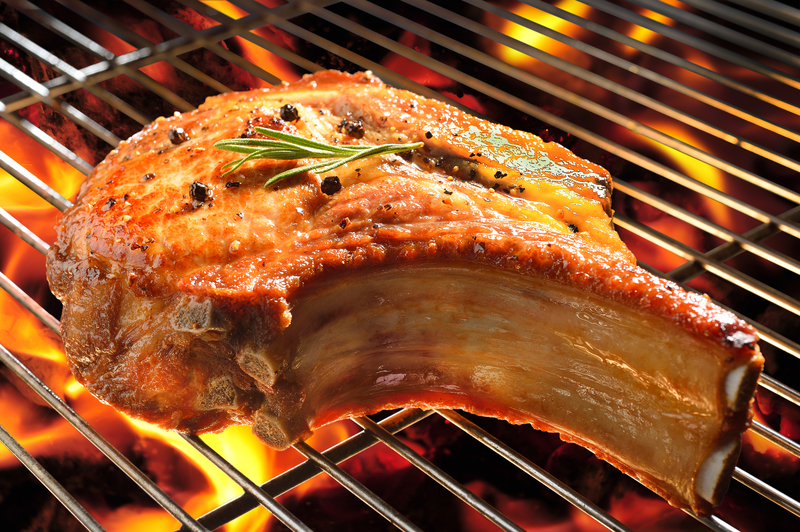
Using proper grilling techniques can enhance the healthfulness of meals prepared on a charcoal grill.
The following practices focus on minimizing harmful byproducts, ensuring adequate air circulation, and effectively controlling temperatures.
Minimizing Smoke Exposure
To reduce smoke exposure while grilling, one effective strategy is to avoid cooking fatty cuts of meat.
Leaner meats produce less smoke compared to fatty options.
Another aspect to consider is the use of marinades.
Marinades can help reduce the formation of harmful compounds.
Ingredients like vinegar and citrus juices may also add flavor and tenderness.
When meat drippings hit the hot coals, they create smoke that can contain carcinogens.
Placing a drip pan under the grill grates can catch excess fat.
This reduces smoke and flame flare-ups, ultimately leading to healthier grilling practices.
Proper Ventilation Practices
Good ventilation is essential for reducing smoke and ensuring a safe grilling environment.
Keeping the grill lid open while lighting can prevent excessive smoke buildup.
Using a grill in an open area is important as well. This allows smoke to disperse and decreases inhalation risks.
If grilling indoors, exhaust fans or open windows can help circulate air, reducing exposure.
Another useful tip is to position the grill away from structures and overhanging branches.
This prevents smoke from being trapped in enclosed spaces, promoting better air quality during and after grilling.
Controlling Cooking Temperatures
Monitoring cooking temperatures is crucial for health-focused grilling.
Cooking over high heat can lead to the formation of harmful compounds.
Therefore, managing the heat is key.
Using a meat thermometer helps ensure meats reach safe internal temperatures.
For poultry, that’s at least 165°F, while ground meats should reach 160°F.
Another technique is to create different heat zones on the grill.
This allows for searing over high heat before moving food to a cooler area to finish cooking.
Lower temperatures can help minimize charring and enhance flavor without compromising health.
Healthy Grilling Recipes and Ingredients
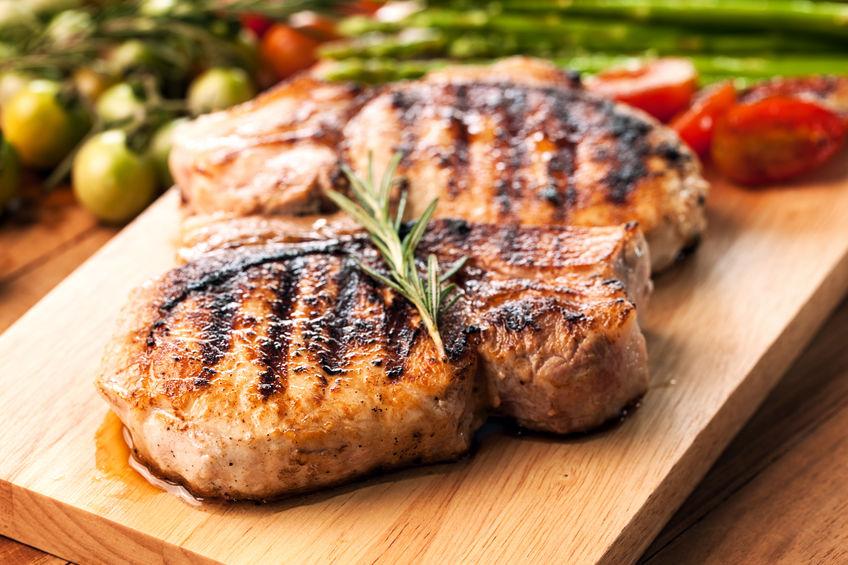
When it comes to healthier grilling, it is essential to choose the right ingredients and recipes.
Lean meats, vibrant vegetables, and flavorful marinades can transform meals into nutritious options that taste great.
Choosing Lean Meats
Incorporating lean meats into grilling recipes can significantly reduce fat content while still providing protein.
Examples include skinless chicken breasts, turkey burgers, and lean cuts of beef like sirloin or tenderloin.
Here is a comparison table of some popular grilling meats:
| Meat Type | Fat Content (per 3 oz) | Protein (per 3 oz) |
|---|---|---|
| Skinless Chicken | 3 g | 25 g |
| Turkey Breast | 1 g | 26 g |
| Sirloin Steak | 8 g | 26 g |
Opting for these choices can lead to lighter meals without compromising flavor.
Vegetable-Focused Recipes
Grilling vegetables is an excellent way to enhance flavor while boosting nutritional intake.
Some ideal vegetables for grilling include bell peppers, zucchini, asparagus, and mushrooms.
These vegetables can be marinated in olive oil, salt, and garlic for added taste.
Grilling brings out natural sugars, creating a delicious caramelization.
It is also important to try vegetable skewers for a colorful presentation.
A simple recipe could include:
- Ingredients: Bell peppers, onions, cherry tomatoes, zucchini
- Preparation: Toss with olive oil and herbs, then grill until tender.
Marinades and Seasonings
Using marinades and seasonings can elevate grilled dishes while keeping them healthy.
Marinades based on vinegar or citrus juices are a great option.
They add flavor without excessive calories.
Common marinade ingredients can include:
- Olive oil
- Lemon juice
- Fresh herbs (rosemary, thyme)
- Garlic
These elements infuse the meat and vegetables with flavor while promoting tenderness.
Using spices like paprika, cumin, or black pepper can enhance taste further without the need for unhealthy sauces.
Safety Measures and Best Practices

Grilling safely on a charcoal grill involves proper maintenance, food handling, and cooking practices.
Attention to these details can promote health and reduce the risk of accidents or foodborne illnesses.
Grill Maintenance and Cleaning
Regular maintenance is essential for a charcoal grill’s longevity and safe operation.
Cleaning the grill after each use prevents the buildup of grease and food particles, which can cause flare-ups and unwanted flavors in food.
To clean the grill:
- Scrape Grates: Use a grill brush to remove residue from the cooking grates.
- Empty Ash Catcher: Regularly clear the ash catcher to maintain airflow.
- Inspect for Damage: Check for rust or cracks in the grill body that may affect safety.
Performing these tasks helps ensure a safe cooking environment while enhancing the flavor of grilled food.
Safe Food Handling
Implementing safe food handling practices is crucial to prevent contamination.
Raw meat, especially poultry, should be kept separate from other foods to minimize cross-contamination.
Key practices for safe food handling include:
- Use Separate Cutting Boards: Designate cutting boards for raw meats and vegetables.
- Wash Hands Frequently: Clean hands before and after handling food.
- Avoid Reusing Utensils: Use clean utensils when handling cooked foods.
Keeping raw and cooked foods separated reduces the risk of foodborne illnesses, ensuring safer meal preparation.
Cooking to Adequate Temperatures
Cooking meats to the correct internal temperatures is essential for safety.
This kills harmful bacteria that can cause food poisoning.
The recommended internal temperatures for various meats are:
- Poultry: 165°F (75°C)
- Ground Meats: 160°F (70°C)
- Steaks and Roasts: 145°F (63°C)
Using a food thermometer is an effective method to verify doneness.
Ensuring all meats reach the proper temperature promotes health and safety while grilling.
Environmental Considerations
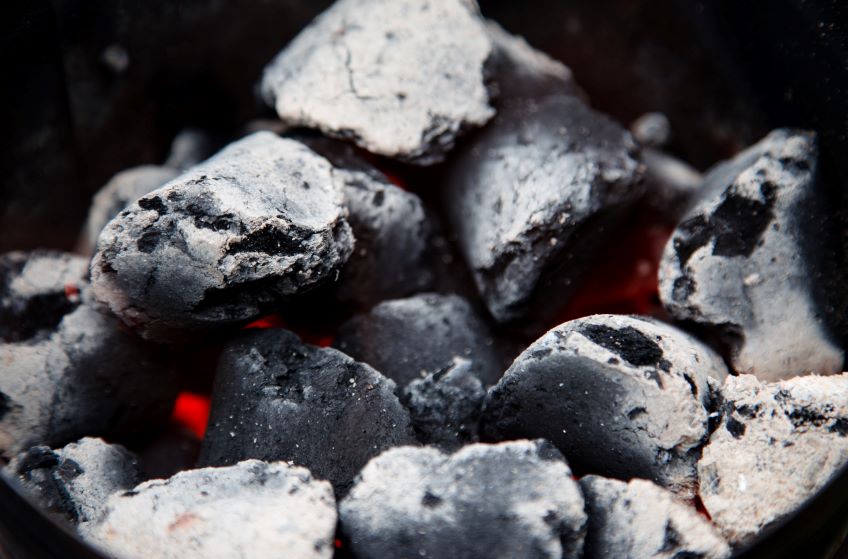
Grilling with charcoal presents several environmental factors that users should consider.
Key aspects include sourcing sustainable charcoal and the proper disposal of charcoal ash.
Sustainable Charcoal Sources
Choosing sustainable charcoal is crucial for reducing environmental impact.
Many charcoal products on the market are made from hardwoods, which can contribute to deforestation and habitat loss.
Look for brands that source their wood from managed forests, ensuring a balance between consumption and regeneration
. Certifications such as the Forest Stewardship Council (FSC) can provide assurance of responsible sourcing.
Alternative options include briquettes made from renewable materials like coconut shells or agricultural waste.
These options often result in fewer emissions while also supporting eco-friendly practices.
Disposal of Charcoal Ash
Proper disposal of charcoal ash is necessary to minimize environmental harm.
Once the grilling session is over, it’s essential to cool the ash completely before disposal.
Ash can contain chemicals and heavy metals that may leach into the soil or water supply.
Residents should consider composting untainted ash as it can benefit soil quality when used sparingly.
If composting is not feasible, disposing of ash in a sealed bag in the trash is an option.
Local regulations may govern the disposal of charcoal ash, so it’s prudent to check guidelines to ensure compliance and protect the environment.
Here are Three Top Charcoal Grill Models for Healthier Cooking

If you’re looking to enjoy the benefits of charcoal grilling while minimizing health risks, choosing the right grill can make all the difference.
Here are three outstanding charcoal grill models to consider:
 The Weber Original Kettle Premium Charcoal Grill is a highly popular and reliable charcoal grill that has become a staple in many backyards.
The Weber Original Kettle Premium Charcoal Grill is a highly popular and reliable charcoal grill that has become a staple in many backyards.
Known for its classic kettle design, this grill combines simplicity with high performance, offering a perfect balance for both beginners and experienced grillers.
This Charcoal Grill is perfect for anyone who wants a simple yet effective grill to deliver delicious, smoky flavors, while ensuring ease of use and reliable results every time.
 The Kamado Joe Classic II is a top-of-the-line ceramic charcoal grill that offers a premium grilling experience.
The Kamado Joe Classic II is a top-of-the-line ceramic charcoal grill that offers a premium grilling experience.
Known for its versatility, this grill is ideal for both beginners and seasoned grillers who want to experiment with different cooking styles, from grilling to smoking to baking.
The Joe Classic II is a fantastic option for those looking for a high-performance, multi-functional grill.
It excels in flavor and versatility, allowing you to cook a wide range of dishes with ease while retaining the authentic smoky taste of charcoal grilling.
 The PK Grills Original PK300 is a premium charcoal grill known for its superior heat retention, portability, and versatility.
The PK Grills Original PK300 is a premium charcoal grill known for its superior heat retention, portability, and versatility.
With its unique design and high-quality materials, the PK300 is perfect for those who want to enjoy an exceptional grilling experience, whether at home or on the go.
This made in USA grill combines rugged durability with exceptional performance, making it an excellent choice for those who want a high-quality grill that delivers delicious results, whether grilling at home or out on an adventure.
These models offer a blend of top-tier performance, superior build quality, and safety features, ensuring a fantastic grilling experience.
With these grills, you can enjoy delicious, flavorful meals with confidence, knowing that they support both your culinary creativity and your health-conscious choices.
Alternative Grilling Methods
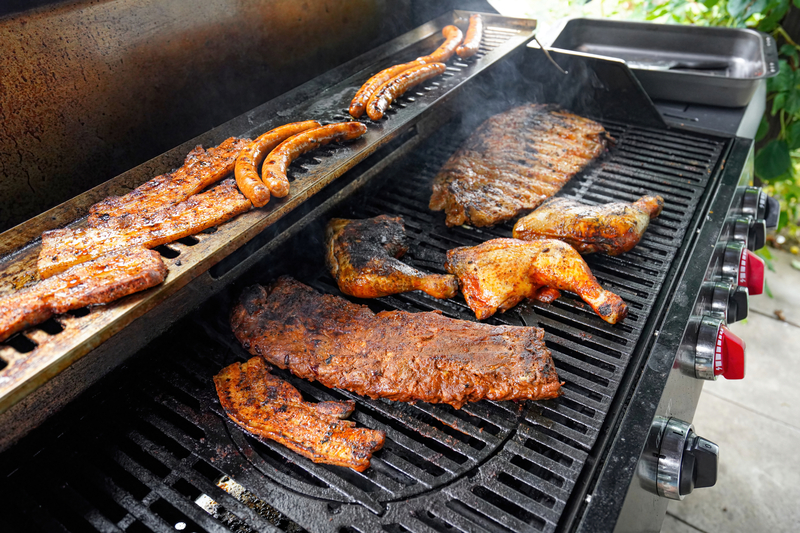 Different grilling methods offer unique benefits and flavor profiles, allowing for a range of cooking experiences.
Different grilling methods offer unique benefits and flavor profiles, allowing for a range of cooking experiences.
Gas, electric, and infrared grilling each have distinct characteristics that can influence cooking times, temperature control, and flavor.
Gas Grilling
Gas grills are popular for their convenience and ease of use.
They typically run on propane or natural gas, providing immediate heat at the turn of a knob.
This method allows for precise temperature control, enabling users to adjust heat levels quickly during cooking.
Cooking on a gas grill often results in moister food since it is less likely to dry out compared to charcoal grilling.
They also produce less smoke, which may appeal to those who prefer a milder flavor.
Maintenance is generally easier with gas grills but requires regular checks for gas leaks.
Electric Grilling
Electric grills are ideal for urban environments or locations with strict grilling regulations.
They operate using electricity and can be used indoors, making them versatile for year-round grilling.
These grills heat up quickly and typically have non-stick surfaces for easier cleanup.
Electric grills offer steady temperature management and reduce the risk of flare-ups, common with charcoal and gas grilling.
Flavor may differ since electric grills do not imitate the smoky notes produced by charcoal.
Nevertheless, they are an excellent option for those seeking convenience and simplicity.
Infrared Grilling
Infrared grills use a different technology that heats food directly rather than the surrounding air.
This method allows for faster cooking at lower temperatures while maintaining moisture in the food.
Infrared grilling provides high-heat cooking capabilities, which is effective for searing meats.
This results in a crisp exterior while keeping the inside juicy.
These grills often have a compact design suitable for small spaces.
They are known for energy efficiency, offering a quicker cook time with less fuel consumption.
Choosing the right alternative grilling method depends on individual preferences regarding flavor, convenience, and cooking style.

